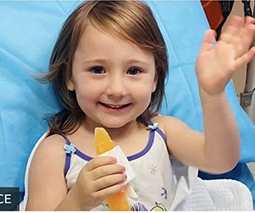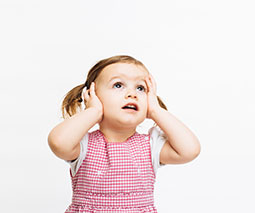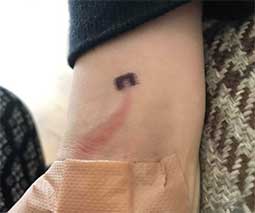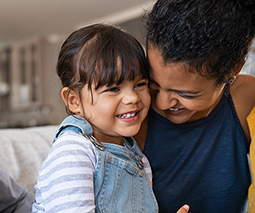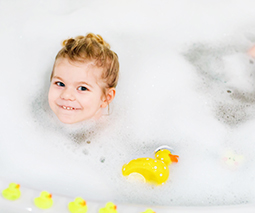Sleep apnoea: How to tell when your child’s sleep problems AREN’T normal

Getting to the root cause of her son’s sleep troubles was a long, exhaustive process for Sydney mum Amber, but when she did, sleep apnoea turned out to be the culprit. While most people have heard of the condition, few are aware of the symptoms; and with sleep apnoea on the increase, it’s time we all knew a little more about it.
What is sleep apnoea?
Obstructive sleep apnoea is a medical condition in children that involves disrupted breathing while they’re asleep. When we sleep, our muscles relax, including those in the upper airway, and these can become blocked by adenoids or tonsils (particularly if they’re on the large side). You may notice your child snoring at night, or even some pauses in their breathing while they’re sleeping, which may indicate obstructive sleep apnoea. If left untreated, the ongoing disrupted sleep can cause growth and behavioural issues.
Sleep apnoea on the rise
Sleep apnoea appears to be on the rise in children, with statistics from Medibank reporting a significant increase in procedures used to diagnose and treat the condition. Claims for sleep studies, the procedure used to diagnose sleep apnoea, have more than doubled in the past seven years, and adenoidectomies – the common treatment path for sufferers – rose by 29 percent between 2010-2015.
Dr Linda Swan, Chief Medical Officer with Medibank, suggests there could be a variety of reasons for the rise. “It’s clear from our data that more young Australians are requiring procedures to diagnose and treat obstructive sleep apnoea, which could imply that the condition is on the rise nationally. This could be due to a range of factors such as increased awareness, but also rising obesity levels, nasal allergies and hay fever.”
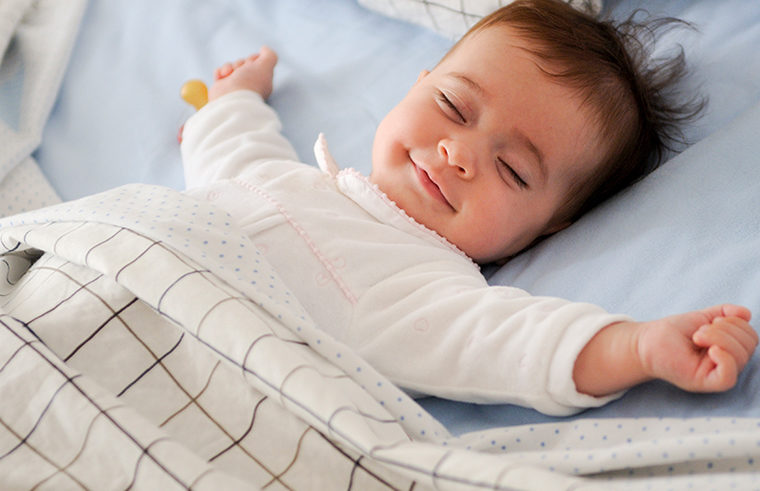
What causes sleep apnoea?
The most common cause of sleep apnoea in children is enlarged tonsils and adenoids, which tend to grow quickly during the preschool years and can create havoc with the bony structures around the mouth and airway that haven’t grown as fast. Other risk factors include obesity, allergies and underlying medical conditions that cause low muscle tone or abnormal craniofacial structures, such as Down syndrome.
It can be serious
Dr Swan points out sleep apnoea in children often goes undiagnosed because of missed symptoms which can lead to a host of problems, some of them quite serious. “We know that symptoms of the condition can be less noticeable in kids, and if left untreated, can lead to development and behavioural problems, including aggression, hyperactivity and limited concentration, as well as more severe health concerns such as cardiovascular issues. That’s why it’s so important that parents are aware of the symptoms, and if concerned, seek advice from their family GP.”
What are the signs and symptoms?
Snoring is one of the many signs that your child might be having problems breathing overnight, but snoring on its own isn’t a sure sign of sleep apnoea. Here are the symptoms to be on the look out for:
- snoring and noisy breathing during sleep
- pauses in breathing during sleep
- gasping for air during sleep
- increased sweating during sleep
- mouth breathing day and night
- tiredness upon waking
- headaches
- difficulty concentrating
- falling asleep at inappropriate times (due to lack of adequate sleep)
- irritability and crying during the day (due to tiredness)
It can be hard to pinpoint
Sydney mum Amber says she first noticed something amiss with her son Dylan’s sleep patterns when he was just a few months old, but put it down to what she assumed was typical young baby behaviour. “He was always unsettled, since he was born and the doctors originally attributed it to colic. But he kept waking up and he wasn’t always hungry,” says Amber. “He was really hard to settle because he was always overtired.”
Amber struggled with Dylan’s disrupted sleep and unsettled behaviour for months while she searched for answers, even trying a sleep school to figure out how to get her baby to sleep better. “They just told me I had a baby who wakes up a lot,” she said.
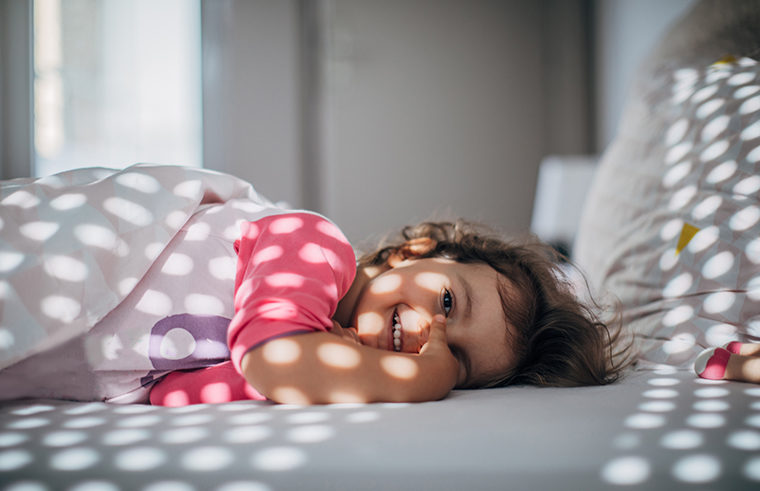
How sleep apnoea is diagnosed
As Dylan approached eighteen months, Amber noticed that it was his own breathing that was waking him up at night. “He would stop breathing and then take a big gasp of air. That’s when I realised that his sleep problems were about more than just him being unsettled and not wanting to sleep.”
With Dylan continuing to wake every hour overnight, Amber took him to see an ear, nose and throat specialist, who immediately suspected obstructive sleep apnoea, and sent them off for a sleep study to confirm the diagnosis.
“The sleep study confirmed that he was stopping breathing eleven times an hour, which was categorised as mid-range sleep apnoea. His oxygen saturation levels were really low, because he wasn’t getting enough oxygen during his sleep,” Amber says, adding that this played out in his day-to-day behaviour. “He was always tired and irritable, and cried a lot. It was like he didn’t know what he wanted a lot of the time, because he wasn’t thinking clearly.”
Treatment for sleep apnoea
With most childhood sleep apnoea conditions being caused by enlarged tonsils and adenoids, removing these successfully treats the condition in 80 to 90 percent of sufferers.
In Dylan’s case, once his tonsils and adenoids were removed, the symptoms of sleep apnoea disappeared completely. “We noticed the results right away,” says Amber. “Now he doesn’t snore, he sleeps well, and there’s no signs of him stopping breathing.”
If your child’s sleep apnoea condition is caused by something else, your GP will recommend the appropriate course of treatment. For example, if the cause is obesity, the treatment would be to decrease body weight. If allergies or hay fever are the culprits, a course of nasal medication may be suggested.
Dr Swan’s tips for identifying and managing sleep apnoea:
-
- Listen out: Observe your child while sleeping to detect whether of not they are snoring, as this can sometimes be an indication of obstructive sleep apnoea.
- Look out: Keep track of your child’s behaviour during the day, specifically watching out for fatigue, behavioural issues or if they’re falling behind at school.
- Reach out: If you feel your child may be experiencing symptoms of obstructive sleep apnoea, see your family GP right away, who’ll be able to recommend diagnostic procedures and treatments
 Need some more sleeping advice? Our Parent School sleep experts can help. Click to find out more or book a one-on-one session.
Need some more sleeping advice? Our Parent School sleep experts can help. Click to find out more or book a one-on-one session.
